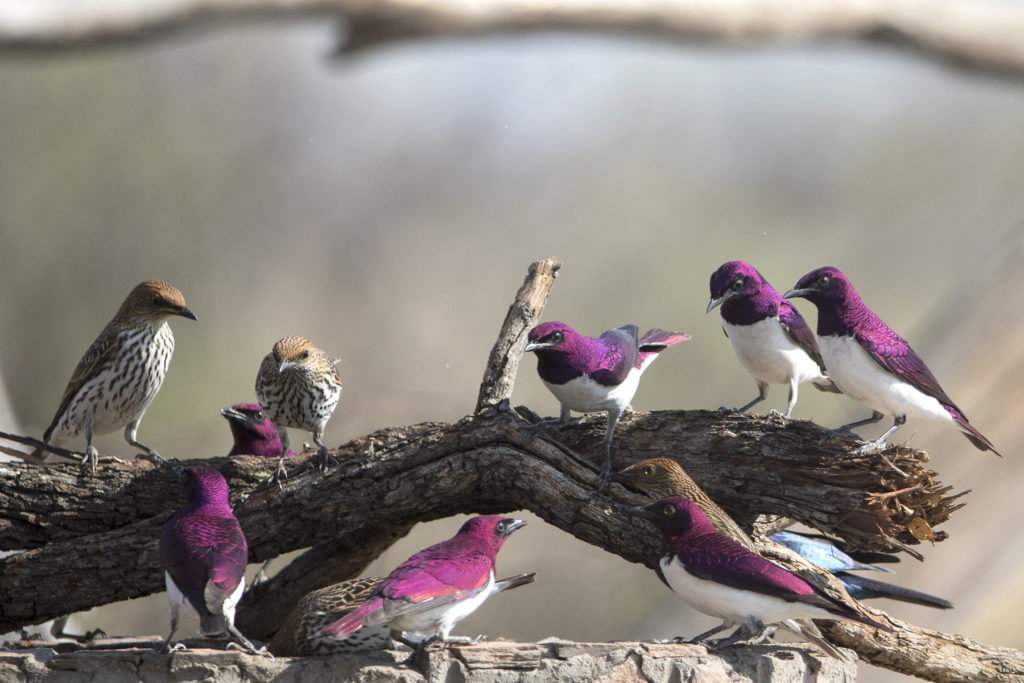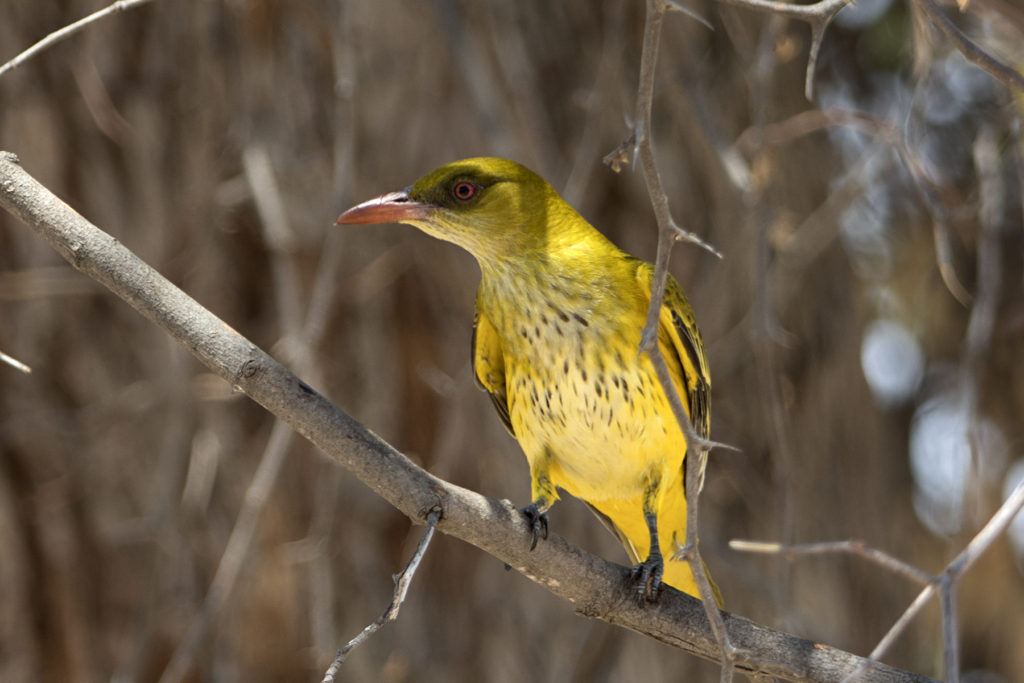Traveling to Hwange for the annual 24-hour game count, we could not remember ever seeing the road up from Bulawayo to the park so dry. Very few of the magnificent trees along the way had broken out in their summer flush and the sides of the road looked like dust bowls. On the horizon, we could see sinister palls of smoke as the veld burned
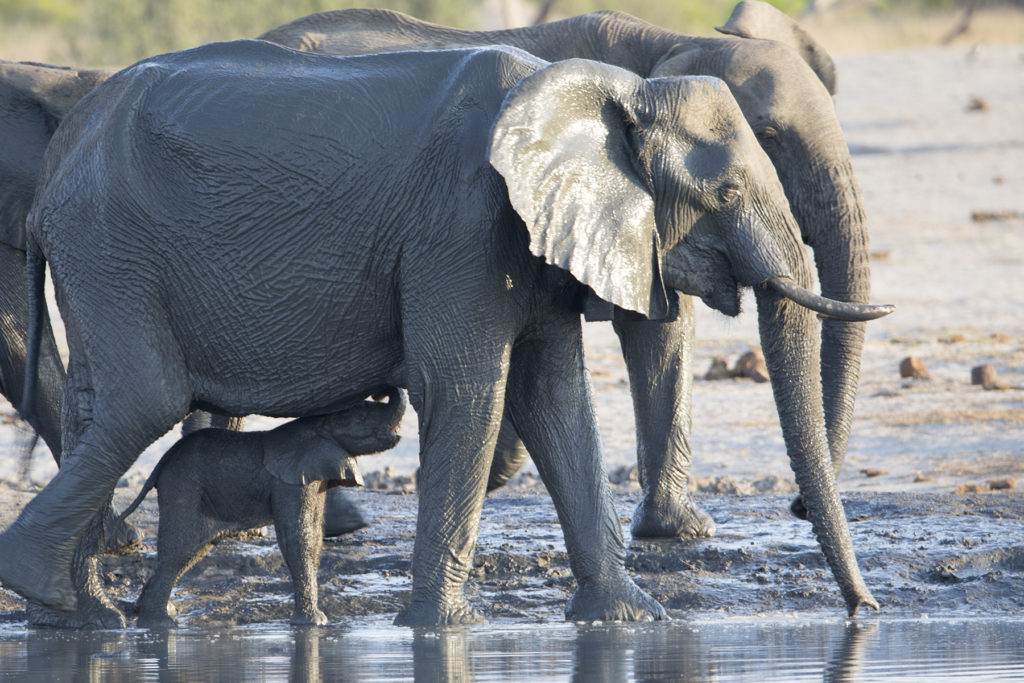
The park, too, was extremely dusty and arid with Acacia erioloba the only trees in leaf, standing out like green beacons, affording some respite to groups of elephant, kudu, impala and the occasional herd of wildebeest that stood crammed underneath them during the scorching midday heat. The solar pumps are working well, but most waterholes were under severe pressure with so many animals seeking water, especially those pans that had large numbers of elephant coming to drink. Although some animals were rather thin, in general most seemed to be coping with the harshness of the drought reasonably well. Despite poor rains, the solar powered water pumps ensured that the pans were brimful at the start of the dry season and have done a marvelous job keeping water flowing day in and day out with little cost or maintenance. The foresight and courage of Dave Dell to insist on raising funds in order to forge ahead with the conversion from diesel engines to solar powered pumps, despite much skepticism at the time, is now hugely appreciated. Fuel in Zimbabwe has been in extremely short supply for months, so had we been reliant on diesel pumps this year, many animals would have perished from thirst.
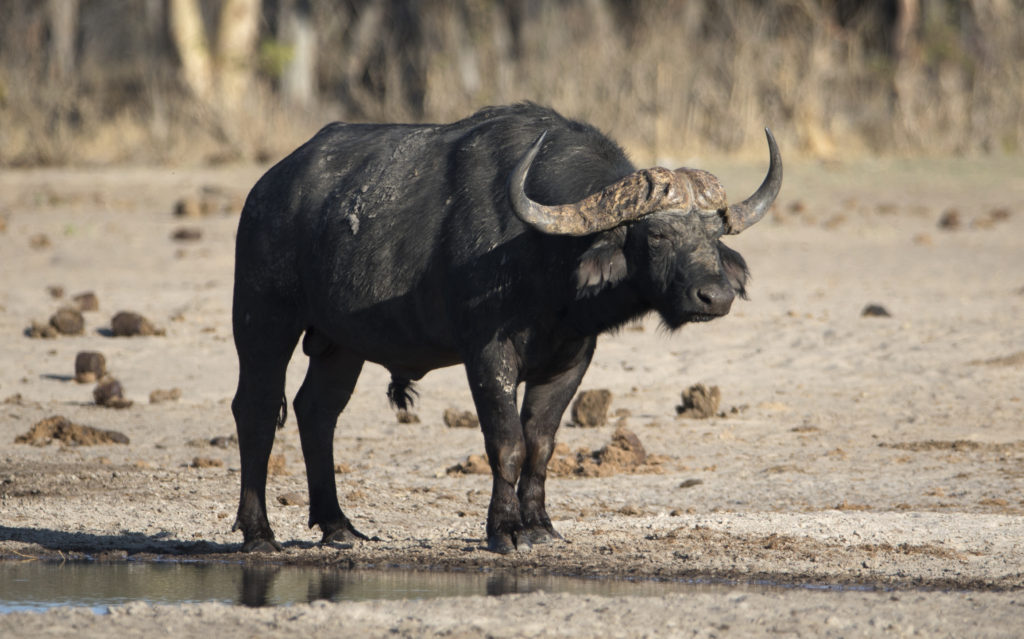
Being so dry, the animals appeared somewhat weary as they plodded down to the water. A fair number were bony and spare, spines and hipbones prominent, particularly elephant and buffalo, and there were some elephant carcasses scattered about with tusks still intact – victims of the drought. However, despite extremely harsh conditions, the antelope and zebra appeared to be thriving, and the predators, of course, were sleek and fat.
The highlight of the trip for us and surely for a great number of game counters as well as foreign visitors staying in the private camps, must be the days at Ngweshla in the company of a lion pride comprising two males, five females and six cubs – Cecil the Lion’s grandcubs. The males were pursuing one of the lionesses who was obviously coming into season, whilst two other females kept watch over the gamboling youngsters. There were a couple of lone, elephant calves wandering about which were fair game for the lions and a killing spree began with one such youngster, that had been forlornly hanging about the pan, becoming the first of several victims. As tourist vehicles arrived the following morning, the lions wandered in amongst them seeking shade. The game count convoy set off into the Wilderness Safari area from Ngweshla with the pride, heads up, lying in the shade of the huge eriolobas outside the camp watching us all drive by! On our return, a couple more victims littered the vlei, and despite being fed and full, the pride continued to harass elephant herds with tiny babies afoot.
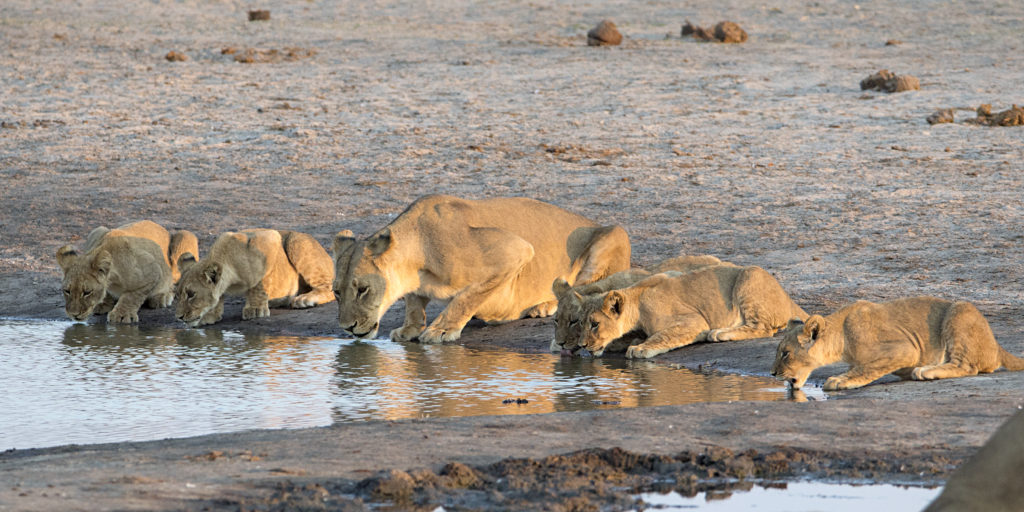
A very handsome eland bull was spotted trotting across the vlei but was spooked by the lionesses and cubs emerging out of the bush to lie in the sun. A cheetah was sighted near Kennedy Two where it had killed a young kudu, and after resting for a while, it gingerly emerged to claim its prize and with astounding strength, pulled the carcass into deep shade, away from onlookers. During our count, we had several hyenas come to the pan in the early part of the night and the youngsters had wonderful fun frolicking in the water, splashing and cavorting, occasionally turning somersaults. They then had a go at bringing down a baby elephant, but his mama was having none of it, her shrieks and bellows loudly reverberating out of the inky darkness. The clan also attempted to hunt a zebra but came up short again.
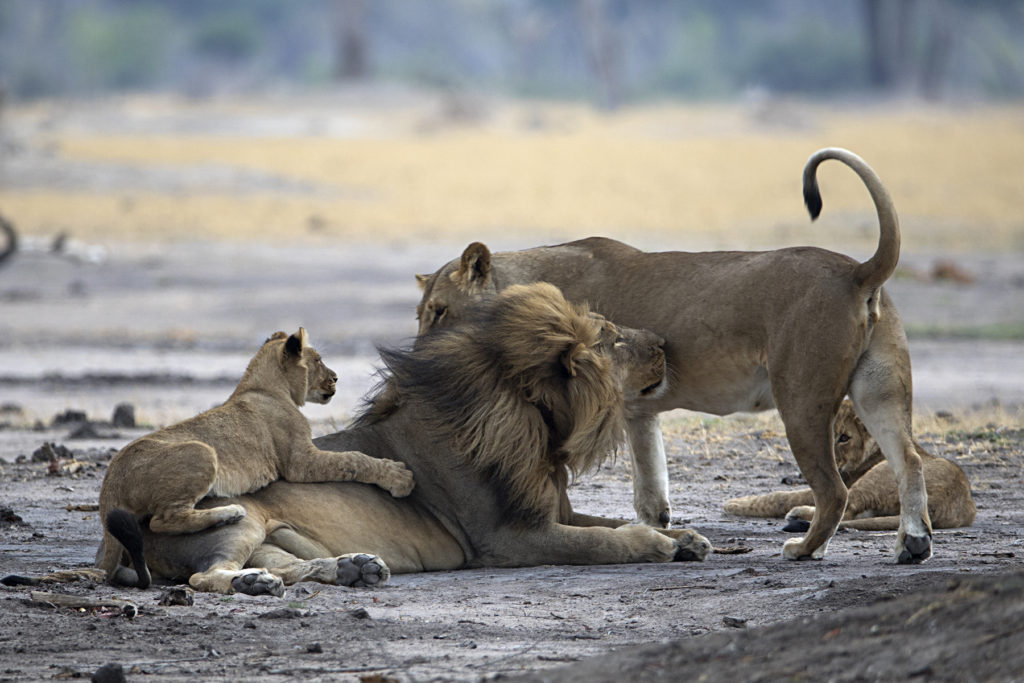
It was heartening to see so many critically endangered vultures feasting on the various kills – no shortage of food for them! A pair of Secretarybirds flew down to the pan, one of them doing a fancy bit of aerobatics before effecting its Boeing-like landing near the water. The larger migrants have yet to return but we did spot some Lesser Spotted Eagles, plenty of Yellow-billed and some Black Kites, and Kori Bustards were out in force. Overnight there was the constant drumming beat – bom…bom…bom….bobom of the male Kori Bustard and we saw a magnificent specimen strutting his stuff across the vlei, fanned tail erect and neck feathers puffed up as he pranced importantly along. We spied quite a small Kori chick following its parent across the Kennedy Vlei at sunset which, for us, was an unusual sighting.
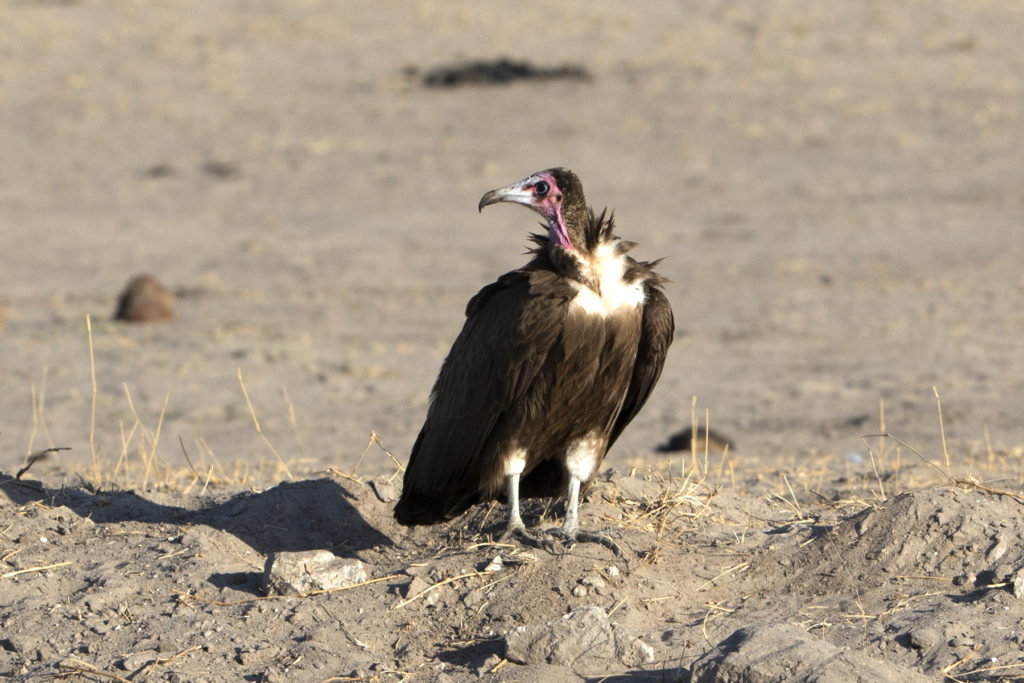
One morning, having been terrified out of our sleeping bags by the reverberating roars of a male lion VERY close to our tents, the grunting grumble of a Verreaux Eagle Owl was heard closely followed by the Southern Ground Hornbills somewhere out there, doop, doop, dooping. We saw numbers of Burchells and Double Banded Sandgrouse and it was lovely watching the Burchells flying for a swift drink in the mornings, uttering occasional Chok-lit calls.
While camping at Kennedy One and Ngweshla before the count, we were kept entertained by the large numbers of birds visiting the various birdbaths. The beautiful iridescent colours of the the Cape Glossy and Violet-backed Starlings, along with the occasional Marico, Amethyst and Scarlet-chested Sunbird shining in the sunlight, was fantastic and the incredible bright yellow of the Black-headed and African Golden Oriole was simply stunning. Cute Violet-eared, Black-faced and Blue Waxbills flocked to the bird bath at Kennedy One along with many weavers and doves. The bird bath at Ngweshla was often graced by Greater Honeyguides both male and female, Black-throated and Yellow-fronted Canaries, gorgeous Violet-backed Starlings of both genders, Yellow-throated Bush Sparrows and thuggish Grey Go-away birds as well as hordes of noisy Meyers Parrots, amongst others
